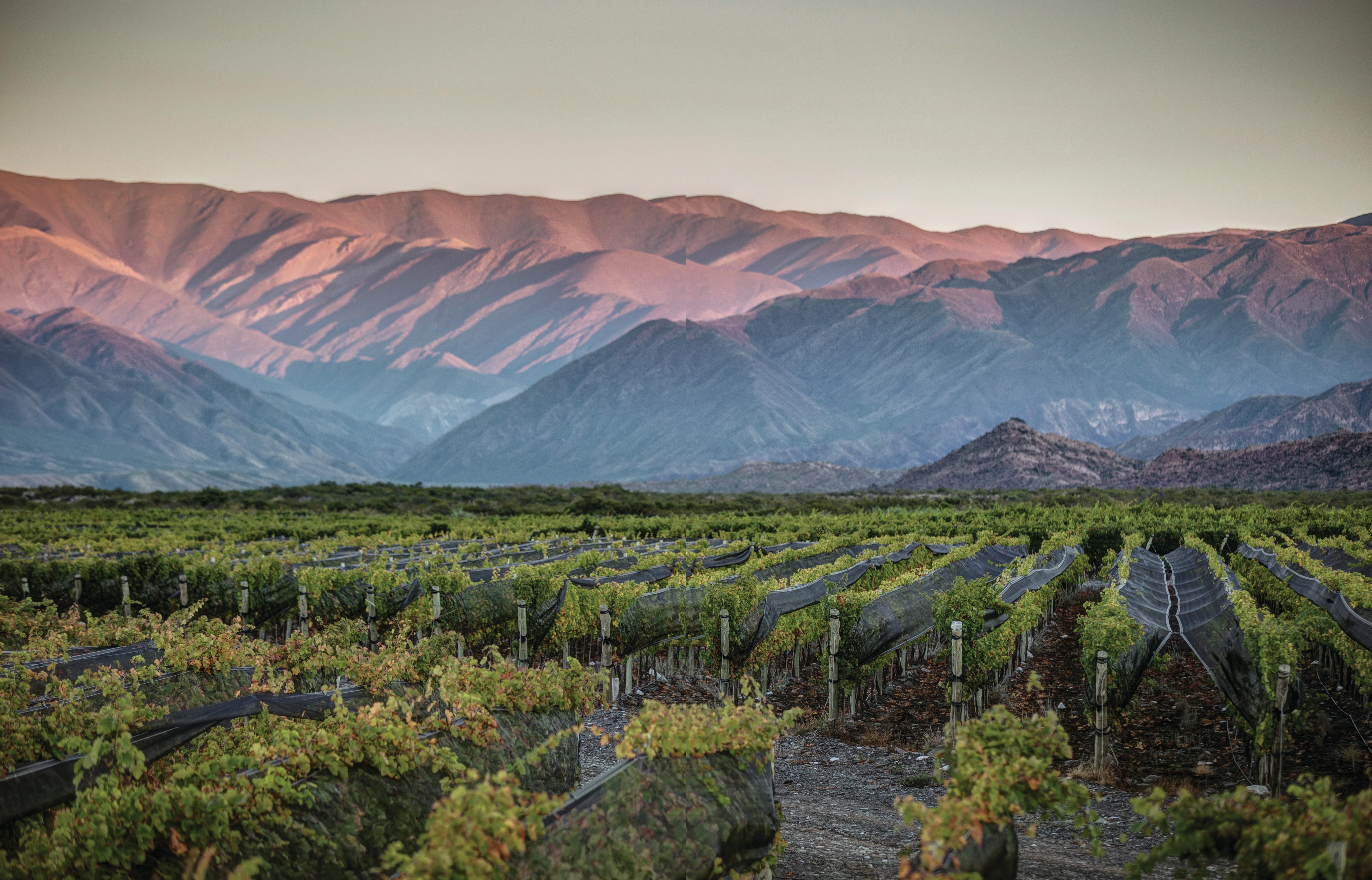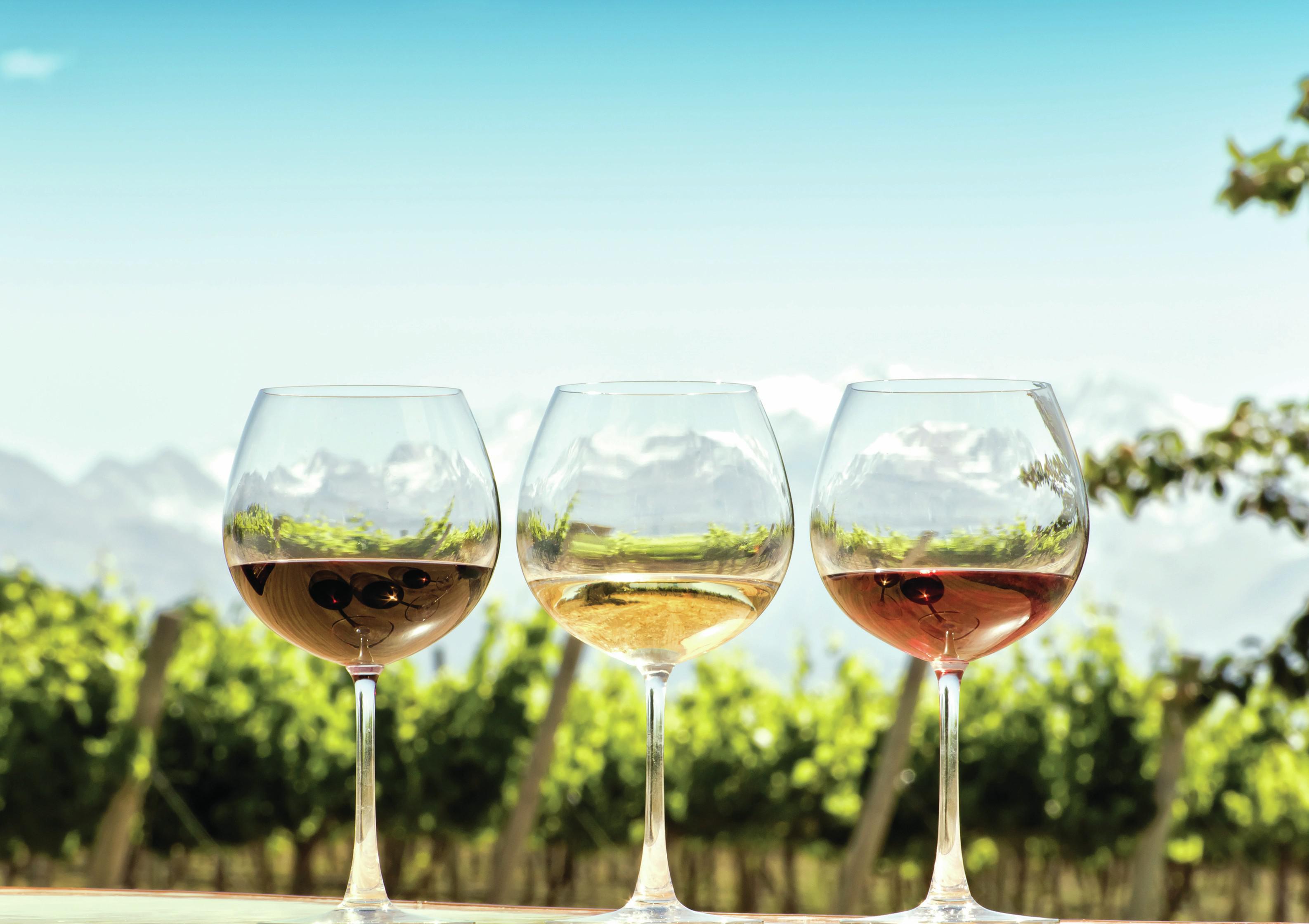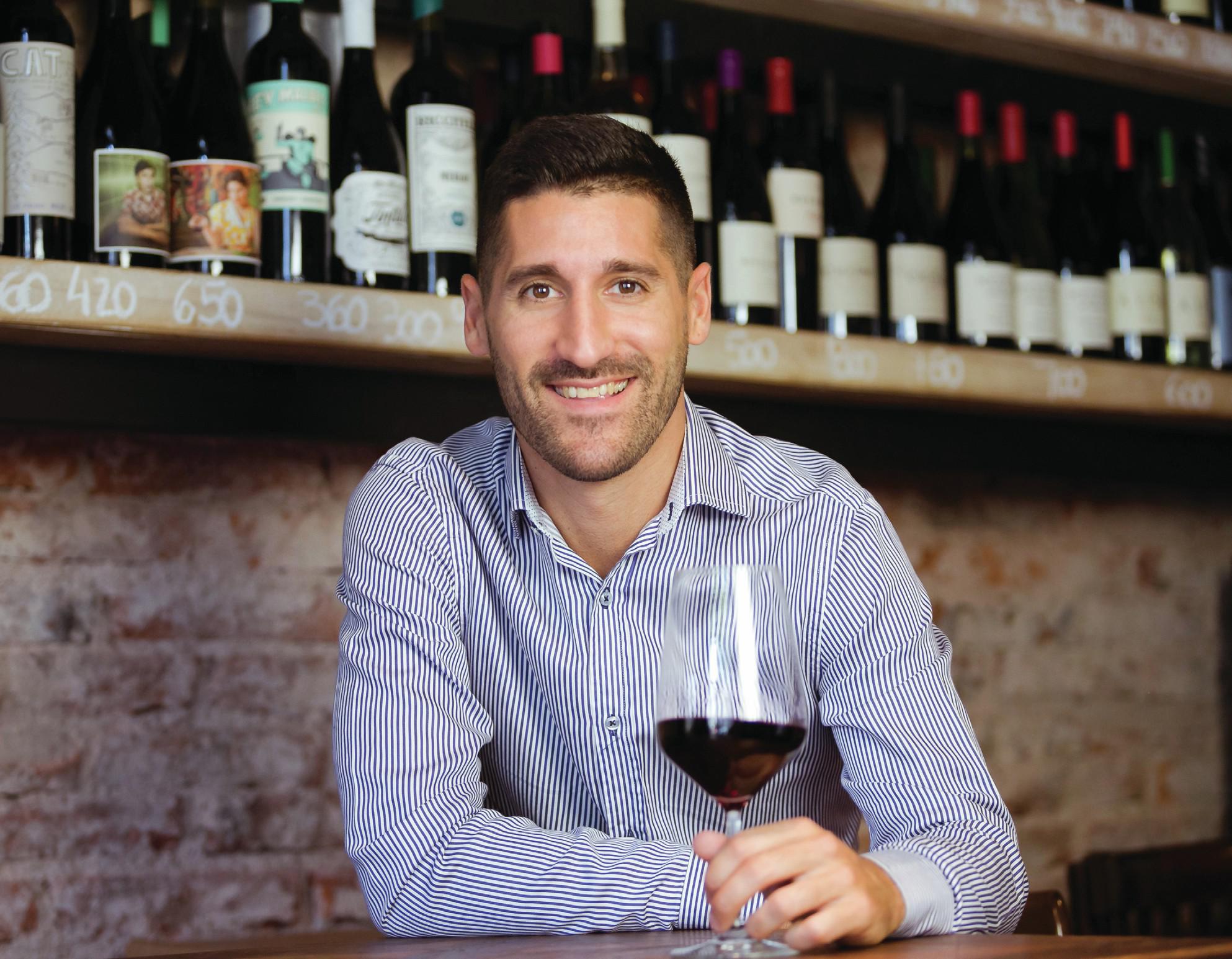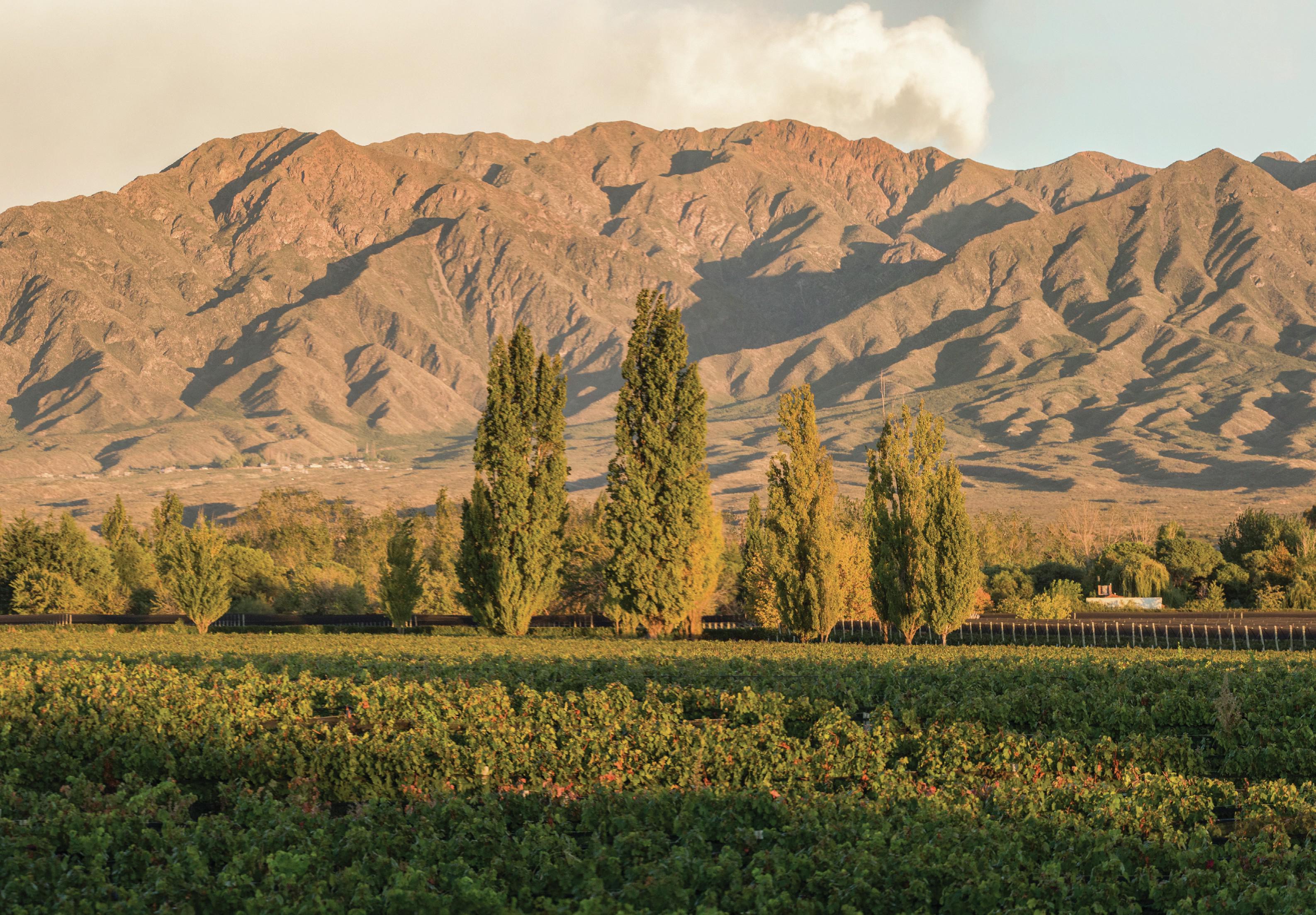This website uses cookies so that we can provide you with the best user experience possible. Cookie information is stored in your browser and performs functions such as recognising you when you return to our website and helping our team to understand which sections of the website you find most interesting and useful.
Pioneering producers diversify into other grapes in Argentina
While traditionally lauded for its outstanding Malbecs, Argentina’s wine industry is diversifying into other grapes, led by a younger generation of pioneering producers, as Jessica Mason discovers.

IN THE past five to eight years, Argentina has started a wine revolution. What began as a study of the country’s diverse terroir resulted in new producing regions, yielding what Asociación Argentina de Sommeliers president, and Matias Prezioso describes as winemaking that shows “incredible precision”.
Prezioso, also the co-founder of the VinEsence consultancy, admits, however, that what started out as a long-term game has come to fruition faster than anyone thought. “This work takes time to communicate abroad,” he says, explaining that the future will hold greater global recognition for Argentine wines for both their calibre and diversity.
Wines of Argentina CEO Magdalena Pesce says that the Argentine wines that are selling most rapidly right now are the “premium Malbec and red blends”, but also reveals that sales are strong for “coolclimate Chardonnays, Criollas and Torrontés among the whites”.
NEW FRONTIERS
In terms of regional success, Wines of Argentina ambassador Phil Crozier says “both Salta, in the north, and Patagonia, in the south, are doing very well”, plus “new regions in Chubut, in the very south of Argentina, which are opening up new cool-climate frontiers”. This is important, says Crozier, because even though “these extremes are risky, they are paying dividends in terms of their quality”.
Madeleine Stenwreth MW explains: “The cool, maritime climate of the South Atlantic coast in Chapadmalal, 7km from the ocean in Mar del Plata, in the southern part of the province of Buenos Aires, is offering up some exciting results in the likes of elegant, bright and fragrant Albariño, Sauvignon Blanc, Chardonnay, and also Pinot Noir under the Costa y Pampa label by Trapiche.”
She says there are also high expectations for young plantings of Assyrtiko in this same area. Considering Assyrtiko’s history with being rooted in volcanic ashes, such as on the Greek island of Santorini, an exciting Argentine trial has seen the variety grown in volcanic ashes spewed from previous eruptions of the Tupungato volcano, high up in the Andes. These have been transported by the winds more than 1,000 km further east to settle as a layer in vineyard soils.
Stenwreth explains: “The abundant annual rainfall, which makes irrigation unnecessary, and the very windy conditions which keep disease at bay, adds further interest to the diversity of the Argentine winescape. Its rainfall pattern adds a real point of difference to this region, as droughts continue to be a threat with the Andes receiving less and less winter snowfall.”
Despite its great success in both its reputation and adaptive methods for planting, the pandemic still took its toll on Argentine wine. According to the IWSR, total Argentinian wine volume was down by almost 7% in 2021, and down by 1.6% compound annual growth rate (CAGR) 2016-2021. However, IWSR does forecast that the category will only decline by a further 1% CAGR between 2021-2026, remaining relatively flat, and likely to peak again soon.
The top-five export markets for Argentine wine are the UK, the US, Brazil, Canada and Paraguay, with the UK and Brazil set to show volume growth 2021- 2026 (the UK at 2.2% CAGR 2021-2026, and Brazil at 3.5% CAGR 2021-2026).
There is also a sweet spot when it comes to retail pricing, which goes some way towards helping boost sales while retaining Argentine wine’s premium positioning. Henry Currie, commercial director of Europe at Susana Balbo, says: “The aspirational off-trade price needs to be in and around the £12-£15 price point.”
Catena Zapata fourth-generation vintner and managing director Dr. Laura Catena also discusses the ideal price for the country’s wines. She says: “Malbec above £10 has been selling really well during the last two years”. She adds that Argentine wine is “also seeing growth in the more expensive £25-£80 retail bracket, as many drinkers have increased their spend for at-home drinking” since the start of the pandemic, giving rise to them buying better-quality wines.

There are several hot trends in Argentine wine, whether that’s the introduction of its captivating whites, giving people a taste of Chardonnay and Sauvignon Blanc, or the increasing popularity of sparkling, orange or rosé wines. Along with this, Argentina is seeing success with organic and sustainable viticulture, while also tapping into consumer trends such as low-alcohol, and canned wine.
Ana Lovaglio Balbo, marketing manager at Susana Balbo, says: “We are pioneering the white wine revolution, with several interesting high-end whites. Under the Signature line we have our Barrel Fermented Torrontés, which was the first of its type, a crispy very sharp and mineral Chardonnay. There is also our Signature White Blend, which features Semillon, Sauvignon Blanc, and Torrontés. And we recently launched two limited-editions. The first is a terroirfocused Torrontés from our vineyard in Gualtallary. It is more austere and elegant than the usual Torrontés. The second is a very elegant and polished orange Torrontés. However while most wineries enter the orange wine trend with more commercial wines, we did it with a very high-end, limited-production and artisanal wine.”
Lovaglio Balbo also draws attention to the sparkling wines under Susana Balbo’s Osadia de Crear brand, and explains how the winery is “following organic”, saying two of the Balbo vineyards have already been converted. She explains: “We already have an organic wine under the Benmarco label, and soon we are launching Crios Sustentia, a portfolio that includes organic wines, unique varietals, and low-alcohol wines. Finally, we have a grape-based beverage with no alcohol at all called Envero, which we have launched into cans this year.”
Grupo Avinea
Grupo Avinea, the wine group behind Bodega Argento, recently became the first Argentinian wine producer to join the “4 per 1,000” initiative, a global movement that aims to demonstrate the important role of agriculture, and in particular agricultural soils, in tackling the issues of food security and climate change.
Avinea is Argentina’s largest producer of organic wines through wineries and brands including Bodega Argento in Mendoza, and Otronia in Patagonia. It is the country’s first wine producer to join the global initiative, and one of only a handful of wine groups worldwide to sign up.
Susan-Anne Cosgrove, vice-president of global marketing at organic winery Domaine Bousquet, says that there is plenty of evidence of Argentinian wine diversifying beyond Malbec. Paz Levinson, wine director for Anne-Sophie Pic’s Pic Groupe, agrees. “The big Argentine trends are the white wines, as well as low-intervention, super-highaltitude, lighter red wines, and sustainable viticulture,” she says. In particular, Levinson believes that people should take note of the quality of the wine coming from the mountainous vineyards. “The really high altitude wines are special because there are not so many countries that can make such amazing wines at 2,000-plus metres.”

Striking new partnership
Bodega Navarro Correas recently joined Freixenet Copestick’s expanding portfolio, with its wines now distributed across the group of companies, including through Jascots and Slurp in the UK
The Navarro Correas family’s history dates from 1798 – the year when Don Juan de Dios Correas planted his first vineyards at the foot of the Andes. Then, in 1974, the family began crafting its first wines under the family name.
Bodega Navarro Correas was one of the first wineries in Argentina to produce varietal wines, a focus that continues today in more than 60 vineyards located in Mendoza. The environmentally friendly winery, located in the Agrelo district, opened in 2009, and was designed to ensure efficient use of water and optimum use of sunlight.
It may be Argentina’s reds that still dominate the country’s exports, but there is a growing demand for whites too.
“The current available quantity of Sauvignon Blanc from Argentina isn’t enough to satisfy the global demand,” says Michael Muller, key account manager of Bodega Norton for Europe & Asia. “In the case of Norton we have a limited availability of Altura White Blend, which is comprised of Sauvignon Blanc, Grüner Veltliner and Semillón.”
As Prezioso explains: “Quality whites in Argentina have improved a lot, both in terms of quality and in sales. Logically, it takes time to arrive in export markets because people associate Argentina with red wines. But we have excellent white wines, made from Torrontés, which is now not only found in the northwest, but also from the Uco Valley in Mendoza, with surprising levels of freshness. There are also ambitious Chardonnays, where freshness and austerity are the driving force, showing flavours of herbs typical of the mountain. “
Semillon is another variety with a long history in Argentina: very old vineyards planted to this variety can be found in the Uco Valley in Mendoza, and in the Alto Valle de Río Negro in Patagonia.
For Stenwreth, these and other old vines are one of the country’s biggest assets. “The stats I have on the old vines in Argentina is actually quite a spectacular eye-opener, in a global context,” she says. “To realise that 3,800 ha of Argentine vineyards are older than 80 years old, and that a further 13 000ha are aged between 60 and 80 years, is an impressive achievement for a wine country. Not only that but as much as 20% of the total plantings across Argentina are aged between 40 and 60 years.”

According to Stenwreth, few producers are using this message when communicating about their wines. “There is much more talk about altitude and calcium carbonate-rich soils. It is almost like it’s taken for granted that they have such a treasure trove of old vines.”
Argentinian winemakers are undeniably becoming more daring, says David Bonomi, chief winemaker at Bodega Norton. He says: “In the past few years plenty of new projects have come up in unthinkable altitudes in the Andes. Ten years ago it looked like these would be impossible. There are also a lot of new areas that are being developed like in the extremes of Patagonia, the Atlantic coast, and Jujuy and Tucumán in the north.”
Bonomi adds: “In Mendoza, new vineyards are being planted in the higher regions of Uco Valley, like San Pablo and Gualtallary.”
According to Edelmira’s Paci “there is always someone who is trying to go higher in the Andes, or as high as the climate allows.”
Stenwreth says: “The quality reputation of the specific province that the vineyards are situated in plays a role in catching the fast lane towards fame. For example, Pedernal Valley, at 1,400 metres above sea level, has one of the most exciting combinations of a very cool climate and excellent soils but happens to be situated within the less famous province of San Juan, on the border of Mendoza, which can be a limiting factor in terms of getting the message through. As there is still so much more to be done in terms of educating the trade and consumers about Argentina, preconceptions and generalisations are still holding back the potential for the country to crack markets, and transcend price points.”
As Bonomi says: “We are living through a revolution in the industry of Argentine wine, and this is accompanied by the revival of old Semillon vineyards, plus some varieties that are not so well known from this region, like Grenache, Viognier, Marsane, Albariño, and Pinot Gris, which you will see reflected in future wines.”
Maria Carla Morizzio, manager of marketing, logistics and distribution at Bodega Puna, in Salta, is also looking at steep inclines on which to make great wine. “We are experimenting at an altitude of over 2,530m, in our vineyard located at 3,100m above sea level in the Andes. We planted Malbec, Sauvignon Blanc, Pinot Noir, and Syrah,” she says.
Laura Catena also indicates that from a sustainability perspective, diversifying with plantings across different regions makes perfect sense. She explains: “For several decades now, since the time of my grandfather, our family has owned vineyards in regions outside of Mendoza, such as Salta, La Rioja Argentina, and Patagonia. These wines are made under the brands Altaland and Pasarisa.” She says the winery has many reasons to work in these regions. “First, to bring prosperity to these parts of Argentina, in the way that wine has done for Mendoza. Second, because with climate change, there is less and less water in Mendoza, and finding regions with different water sources is hugely important from a sustainability standpoint.”
Pesce says that lots of things are moving the Argentinian wine scene forward, such as “developing new Geographical Indications, and experimenting with new or ancestral varieties.” Pesce also notes how “the visualisation of female contributions is finally starting to become a reality”, and it seems this recognition is long overdue.
Argentinian wine in the US
The US “is a market where Argentina has positioned itself very well in the last 20 years and which generally pays a higher average price than the rest of the world, so the quality of Argentine wines that can be found is very good,” says Asociación Argentina de Sommeliers president Matias Prezioso. But, he warns, that doesn’t come without its challenges. “Perhaps the current challenge is that the consumer and the trade begin not only to consume Argentine wines of US$15-US$20 (£12-£17), but also that the barrier of US$20 begins to move more to US$30.”
In these price segments, Argentinian wines can find themselves competing against countries and regions with a deep tradition.
In Prezioso’s view, the country is already doing a great job in showcasing its diversity but says that in the US, the reputation of Argentina is still tied to its excellent reputation for Malbec. Because of this trend, there are concerns that ‘Malbec fatigue’ could set in. To mitigate this, Wines of Argentina suggests suppliers use Malbec’s popularity as “a springboard for people to discover other varietals”, says Pesce, who explains this is a good way to drive interest, “especially when they are closely related to regions, such as Pinot Noir in Patagonia, and Chardonnay in the Uco Valley”. Indeed, Stenwreth insists: “Malbec should be used to show how extremely well it can communicate its sense of place and the excitement of the Argentine terroir”.

Where there’s a hill there’s a way: Luján de CuyoPhil Crozier is moved to agree about who it is that’s pioneering the new wave of wines in Argentina. “It is women who are leading the charge, with Laura Catena, Estela Perinetti, and Susana Balbo inspiring a new generation of winemakers in Argentina,” he says. “It is not unusual to find women at the top of winemaking anywhere in Argentina, and these changes have happened over a relatively short 20-year period.”
Argentina has led the charge in so many ways that it’s little wonder that the rest of the world is starting to sit up and take notice. The country’s wine sector is not only achieving extraordinary results, but the paths it is taking towards securing its future as a premium winemaking country are impressive.
Laura Paci, winemaker at Bodega Edelmira, in Maipú, Mendoza, says: “We are now becoming more competitive with the great wines in the world. We have the ideal conditions to appreciate a great style and make it unique.”
Prezioso says there is so much more to discover and appreciate. “I would dare to say there is no country where more exciting things are happening in wine at the moment. Young winemakers who dare to experiment; young vineyards coexisting with centuries-old vines; styles that are breaking the mould and encouraging different harvest points, deep soil analysis and sensitive elaborations that achieve exciting wines.”
He points out that while its vines might be old, Argentina’s wine industry is still in its infancy when it comes to driving forth its new laser focus on quality.
“Undoubtedly, time is a fundamental factor in wine and Argentina only began concentrating on quality wine 30 years ago,” he says. “But what happens today will make the world talk.”

